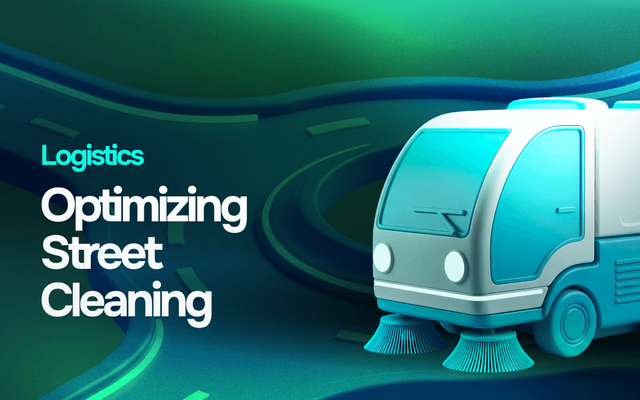
Time is a tyrant. It waits for no man, no truck, no shipment precariously balanced on a loading dock, yearning for departure. It demands. It bleeds. Time is the ultimate limitation — and the one we all have to deal with. We can invest in time, and we can try to get our best ROI out of it, but in the end, all our harlotry and second queuing is just that — all we can do is spend time.
In logistics, delays are not mere inconveniences, they are fiscal hemorrhages, bleeding companies of revenue one tiny cut at a time— it really is death by a thousand cuts. Still, many businesses plow through with manual processes, as if we’re still in some Dickensian warehouse, ledgers smudged with ink, workers scurrying about with clipboards like befuddled orphans. This is lunacy. Some businesses still work on the same premises their forefathers created.
Generations never update the previous generation’s platforms and standards. Logistics automation is not just an upgrade—it’s a reprieve from chaos. With AI-driven route optimization, robotic fulfillment centers, and real-time, needlepoint-precise shipment tracking, modern businesses can orchestrate their supply chains with the precision of a symphony conductor—not the clumsy improvisation of a street-corner busker.
Logistics Automation Is Not Optional. It’s the Price of Survival
Customers today have the patience of caffeinated gnats. If an order takes more than two days to arrive, they act as if they’ve been subjected to some Dickensian hardship. Studies have shown, for example, that just adding that tiny little check of “24-hour shipping” onto a product drives its acceptance by over 200%.
Right now, Amazon can send out a drone, with your new toothbrush and have it at your door a day after you purchased it. That type of efficiency has cuddled consumers and given them an idea of “how things should work.” That’s the watermark you have to measure yourself against.
The Slow Death of Manual Logistics
A preposterous number of companies still rely on outdated logistics operations:
Handwritten inventory logs (as if quills were still in fashion).
Dispatchers making “best guesses” instead of using AI-powered analytics.
Trucks leaving warehouses half-empty, bleeding profits in every mile they travel.
This is a recipe for doom and gloom. According to McKinsey, ineffective logistics processes shave 20-30% off company profits. On the flip side, companies investing in logistics automation solutions report:
25% faster order fulfillment
30% fewer errors
15-20% lower operational costs
This is not “optimization.” This is an existential necessity.

The Mechanics of Automation in Logistics & Supply Chains
Automation in logistics isn’t merely about replacing human effort with mechanical precision—it’s about eradicating friction in every facet of the supply chain. The manual is just that — manual. You have to deal with the human factor.
Things like, “What’s up with Hector today, he’s such a good employee lately and today he keeps dropping the ball?” Well, maybe Hector had a bad night. Maybe Hector had a fight with his wife before he came to work. Maybe Hector is daydreaming of a beer after 5. Maybe Hector is simply sick. There are millions of maybe Hector scenarios. Now multiply Hector by John, and Helen, and Victor, and Veracruz (who works offsite in your Barcelona office), and - heck - even yourself.
That’s the human factor. That is the one thing that automation will ultimately nix. It’s not just about being fast, it’s about taking out that uncertainty - life in general - from the equation.
Order Processing & Warehouse Operations
Without automation, warehouses are dens of entropy—inventory misplaced, orders lost, workers crisscrossing aisles in a fugue state of inefficiency.
Automated warehouses, however, are pure choreography:
AI directs robotic pickers to retrieve items in mere seconds.
Barcode scanning and RFID tracking eliminate inventory discrepancies.
Cloud-based order management systems process thousands of transactions per second.
Amazon’s fulfillment centers process 600,000 orders per day with robotic assistance. Try doing that with a clipboard and sheer determination.
Inventory Management & Demand Forecasting
The great existential dread of logistics: Too much stock drains capital, too little stock alienates customers.
AI-driven logistics automation solutions solve this dilemma with mathematical precision:
Retailers adjust inventory dynamically, preventing shortages.
Manufacturers optimize raw materials procurement, ensuring uninterrupted production.
Grocery chains synchronize supply with demand, slashing food waste by up to 40%.
According to Forbes, AI-powered forecasting improves inventory accuracy by 85%. This isn’t a minor tweak—it’s an industrial epiphany.
Freight Tracking & Last-Mile Delivery
Few phrases vex a customer more than: “We don’t know where your package is.” And it happens a lot. Why? Because if you’re not using a great service or top-tier enterprise solutions - and tech - you’re doing it the way Jane Austen sends out mail — By sending out mail.
That sentence should be banished from the corporate lexicon. When a client or consumer calls they need assurances and certainties. They need to know you’re doing your best and that your company isn’t run by chimps that simply can’t track a simple package. Why? Because, once more, Amazon gives them real-time updates - on there phones - as to where their latest Funk Pop is — even where the delivery truck is at.
With GPS tracking, IoT sensors, and AI-driven logistics automation, companies can monitor shipments in real-time, preempt delays, and reroute with near-clairvoyant foresight.
FedEx’s Smart Tracking system has cut transit delays by 25%—not through luck, but through brutal, unrelenting efficiency.
Logistics Automation Crushes Delays Like a Juggernaut
Delays are not accidents—they are failures of foresight. The idea of accidents is that they are like natural disasters, they can’t be forestalled. But that’s no longer the case. With predictive analysis, we can predict when doom and gloom come venturing in. When an ‘accident’ might happen. Once we know beforehand that there’s a chance of an ‘accident,’ it no longer retains that nomenclature — it switches its concept up and becomes negligence.
Logistics automation dismantles these failures before they metastasize.
Real-Time Shipment Tracking & Visibility
Automation in logistics ensures absolute visibility, with AI monitoring:
Traffic patterns and rerouting on the fly.
Weather anomalies before they disrupt supply chains.
Freight congestion so deliveries aren’t trapped in logistical purgatory.
DHL, after implementing automated logistics management, saw on-time deliveries surge by 26%.

AI-Powered Predictive Analytics & Demand Forecasting
Logistics has, for too long, been reactive. The future belongs to the predictive.
UPS’s AI-driven system anticipates traffic jams — reducing fuel consumption by 10 million gallons annually.
The secret? Data-driven clairvoyance.
When opening your phone, how many apps do you have that can guide you home? All those apps collect data correlate them and find patterns. So, for example, it knows that every Tuesday at 4 pm there’s a 3-block pile up at a certain corner — and it’s a thing that happens every Tuesday. Why? There’s a yoga retreat on that corner and people double park. That type of correlation and alloying of facts gives it the power to divert riders down other intersections. And that’s just one example.
Automated Warehouse & Order Management Systems
A manually run warehouse is anarchy with forklifts. An automated warehouse? A synchronized ballet of speed and efficiency.
Amazon’s robotic systems have cut order processing time by 50%.
Zara’s AI-driven inventory system moves products from design to retail in two weeks—unheard of in fashion.
The Relentless Increase in Deliveries via Logistics Automation
Speed is the new currency. Logistics automation turns “faster” into default mode.
Smart Routing & Fleet Optimization with AI
AI-driven fleet management erases inefficiencies:
Optimized routes reduce fuel costs by up to 20%.
Real-time data prevents trucks from idling in traffic jams.
UPS alone saved $400 million annually through smart routing.
Automated Dispatching & Load Balancing
A half-empty truck is an insult to profitability. AI-driven dispatching ensures:
Fleet capacity is maximized.
Urgent orders are prioritized without disrupting schedules.
Companies using automated logistics management report 15% fewer missed deliveries.
Last-Mile Delivery Automation
The last mile is the most treacherous, costly segment of logistics. Drones, autonomous vehicles, and smart lockers are rewriting the rules:
Amazon Prime Air drones deliver in under 30 minutes.
FedEx’s robotic couriers handle urban deliveries.
Smart lockers slash failed delivery attempts by 50%.
The Verdict—Automate or Be Forgotten
Logistics is evolving. Companies embracing logistics automation are delivering faster, reducing costs, and devouring market share. The genie is out of the lamp and everyone is using up all their wishes. The ones that aren’t? They’re stuck looking through a window at what strange magic the completion is using to leave them stranded in the dust. The benefits of logistics automation are empirical, undeniable, and economically ruthless:
25-30% faster deliveries
15-20% lower costs
Fewer errors, fewer lost shipments, more satisfied customers







